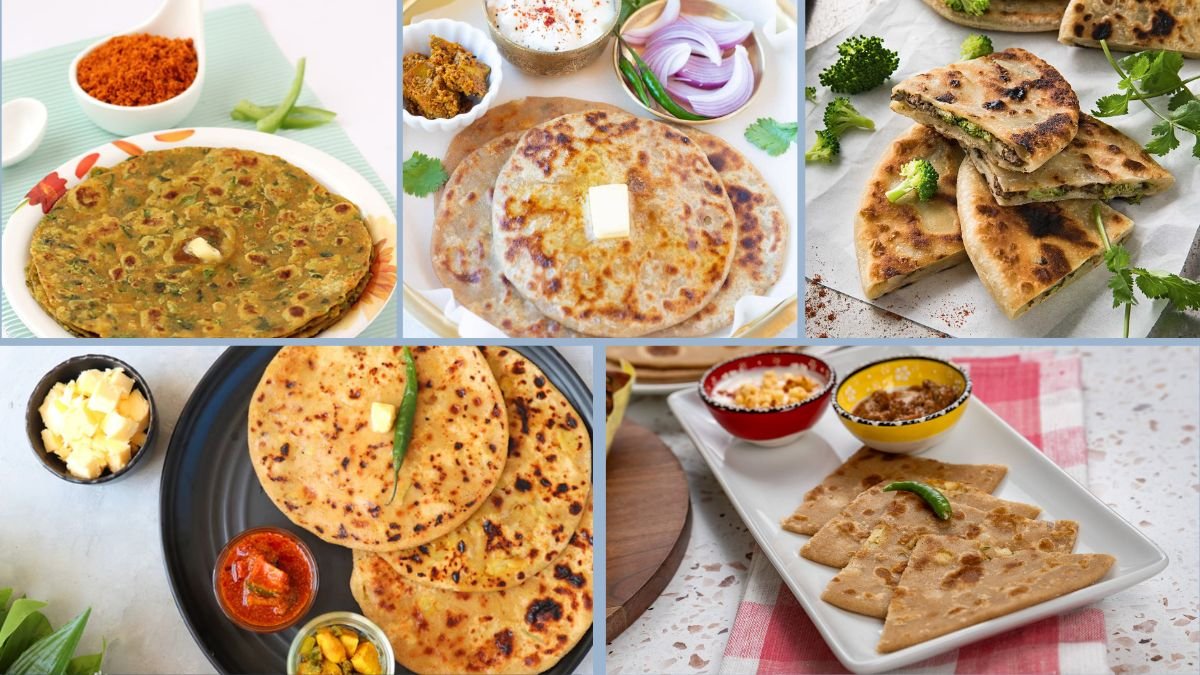Parathas are one of the most loved staples in Indian households. These soft, flaky, and delicious flatbreads can be eaten at any time of the day—breakfast, lunch, or dinner. While plain parathas taste great, stuffed parathas with vegetables are a wholesome, nutritious, and flavorful option that combine the goodness of grains and veggies in one dish.
This article presents a 6-step guide to preparing vegetable-stuffed parathas. The recipe is fully vegetarian, free from non-veg ingredients, and focuses on fresh vegetables, spices, and whole wheat flour. Along with step-by-step cooking instructions, you will also find cultural insights, nutritional benefits, serving suggestions, and common mistakes to avoid.
Step 1: Gather Ingredients
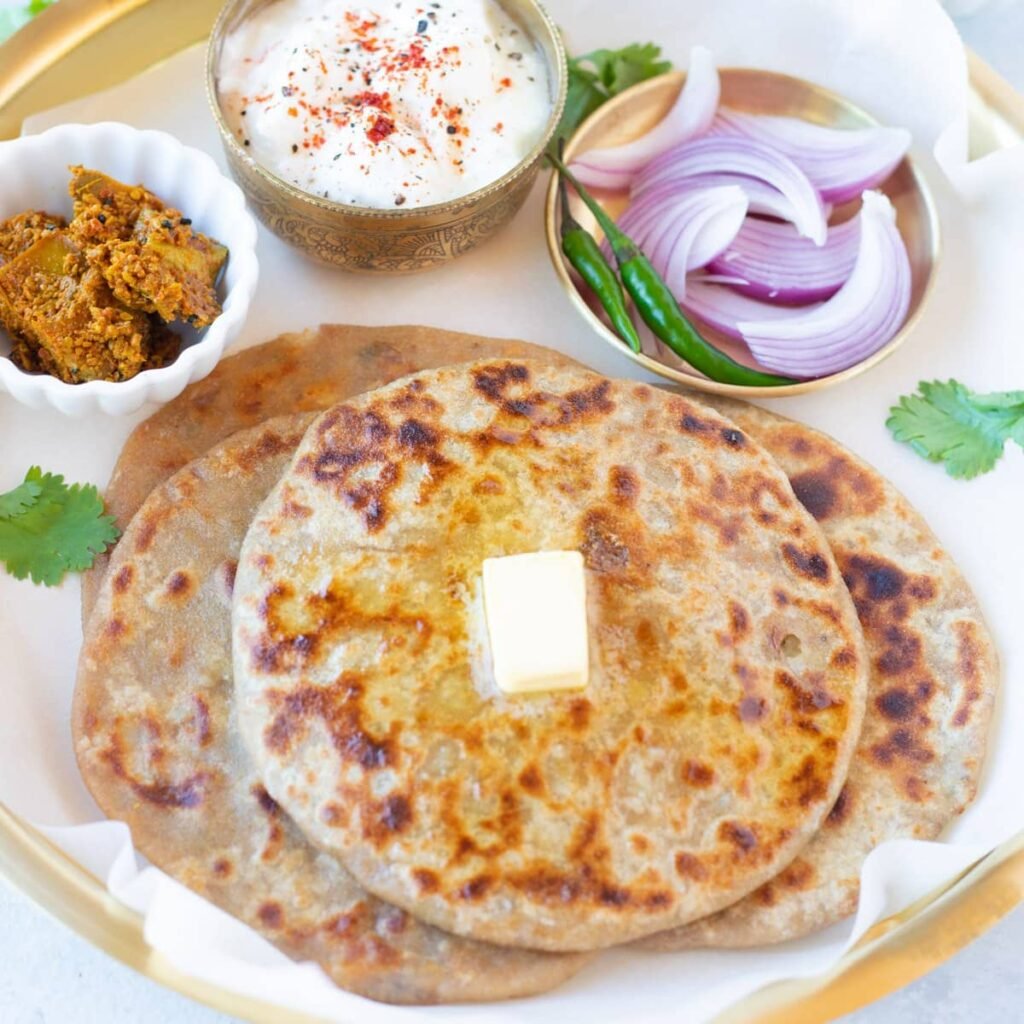
The first step to making parathas is organizing everything you need.
For the Dough:
- 2 cups whole wheat flour (atta)
- 1 tsp salt
- 1 tsp oil or ghee (optional, for softness)
- Water as required
For the Stuffing (choose a mix of vegetables):
- 1 cup boiled and mashed potatoes
- ½ cup grated carrots
- ½ cup finely chopped spinach or fenugreek leaves
- ½ cup finely chopped cauliflower or cabbage
- 2–3 green chilies (finely chopped, optional)
- 1 tsp grated ginger
- ½ tsp cumin seeds
- ½ tsp red chili powder
- ½ tsp garam masala
- ½ tsp turmeric powder
- Salt to taste
- 2 tbsp fresh coriander leaves, chopped
Preparation:
- Wash and chop all vegetables finely.
- Boil potatoes and mash them smoothly.
- Keep all spices measured and ready.
Step 2: Prepare the Dough
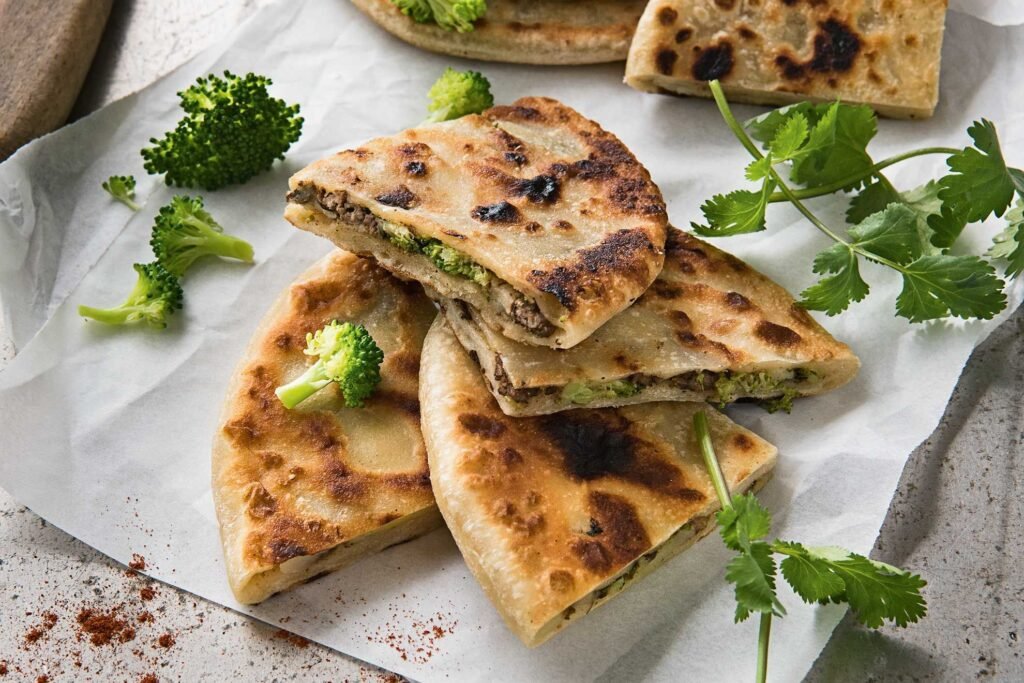
A soft and pliable dough is the foundation of good parathas.
- Take whole wheat flour in a mixing bowl.
- Add salt and a teaspoon of oil/ghee.
- Gradually add water while kneading. The dough should be soft yet firm.
- Cover with a damp cloth and rest for 20–30 minutes.
Resting allows gluten to relax, making the dough easier to roll.
Step 3: Make the Vegetable Stuffing
The stuffing is what makes parathas flavorful and nutritious.
- Heat a pan and dry roast cumin seeds until aromatic.
- Add grated ginger and stir briefly.
- Add chopped or grated vegetables and sauté lightly (do not overcook; they should retain freshness).
- Mix in mashed potatoes for binding.
- Add salt, turmeric, chili powder, and garam masala.
- Finish with chopped coriander leaves.
Allow the stuffing to cool before filling. Warm stuffing makes rolling difficult.
Step 4: Stuff and Roll the Parathas
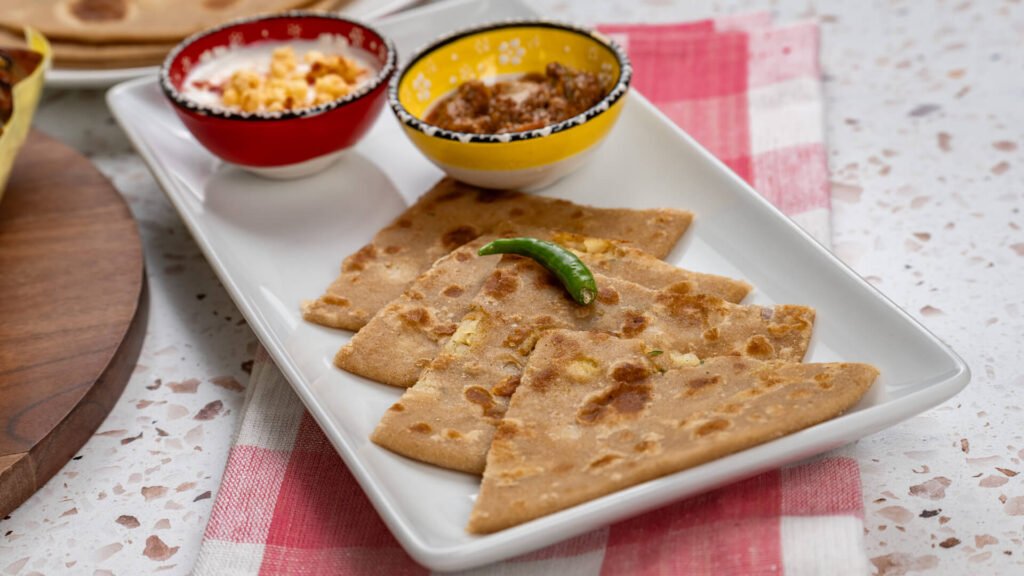
This step requires a little technique, but with practice, it becomes simple.
- Divide the dough into equal-sized balls.
- Roll one dough ball into a small circle (about 4–5 inches).
- Place 2–3 tablespoons of stuffing in the center.
- Bring edges together to seal tightly.
- Gently flatten and roll again into a paratha (7–8 inches). Use light pressure to avoid tearing.
Tip: Dust with flour to prevent sticking.
Step 5: Cook the Parathas
Cooking gives parathas their golden-brown crispness.
- Heat a tawa (griddle) on medium flame.
- Place the rolled paratha on the hot tawa. Cook for 1–2 minutes until bubbles appear.
- Flip and cook the other side. Apply ghee or oil sparingly on both sides if desired.
- Cook until golden brown spots appear and both sides are evenly done.
Repeat with the remaining dough and stuffing.
Step 6: Serve and Enjoy
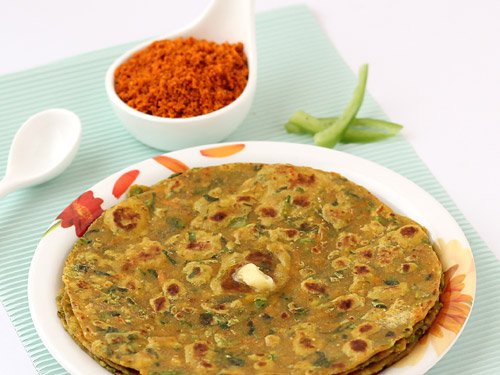
Stuffed parathas are best enjoyed hot. Pair them with:
- Fresh curd or raita
- Pickles (achar)
- Chutneys (mint, coriander, or tamarind)
- A dollop of butter for richness
They can also be packed in lunchboxes or served with dal and sabzi for a complete meal.
Nutritional Benefits
Vegetable-stuffed parathas are a balanced meal in themselves:
- Whole wheat flour provides complex carbs, fibre, and energy.
- Potatoes add satiety and potassium.
- Carrots bring vitamin A and antioxidants.
- Spinach/fenugreek add iron, folate, and calcium.
- Cauliflower/cabbage provide vitamin C and fibre.
- Spices aid digestion and add aroma.
Unlike deep-fried snacks, parathas can be made with minimal ghee/oil, making them a healthier choice.
Cultural Significance
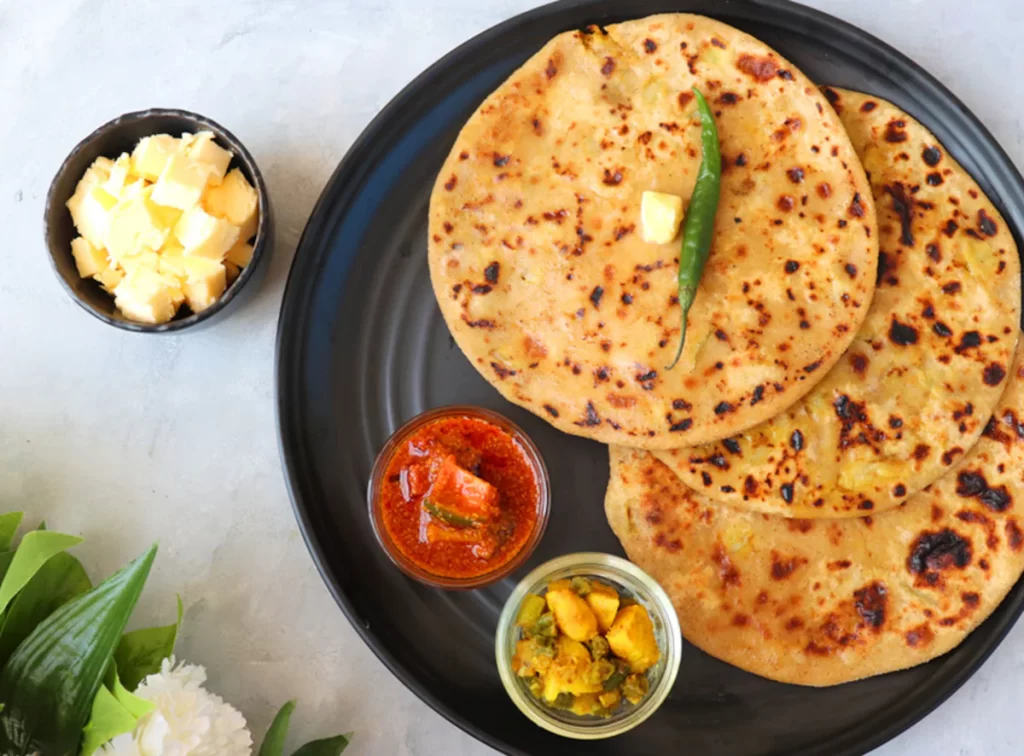
Stuffed parathas are deeply rooted in North Indian cuisine, especially in Punjab, Haryana, and Uttar Pradesh. Traditionally served with white butter and lassi, they symbolize comfort, warmth, and hospitality. Over generations, different variations have evolved—like aloo paratha, gobi paratha, paneer paratha—each reflecting local preferences and seasonal availability of vegetables.
Common Mistakes and How to Avoid Them
- Tearing while rolling: Ensure stuffing is smooth and not watery. Seal edges tightly.
- Undercooked center: Cook on medium flame to ensure even cooking.
- Too much stuffing: Makes rolling difficult. Use a moderate amount.
- Dry dough: Add enough water during kneading to keep dough pliable.
- Burning parathas: Always control the flame; too high heat burns outside but leaves inside raw.
Variations to Try
- Paneer Paratha: Add crumbled paneer to the vegetable mix.
- Mixed Veg Paratha: Use seasonal vegetables for variety.
- Masala Paratha: Add extra chili flakes and herbs to the dough itself.
- No-oil Paratha: Cook dry without ghee/oil for a lighter version.
Conclusion
This 6-step recipe for stuffed paratha with veggies is a perfect balance of tradition, health, and taste. From kneading dough and preparing the stuffing to rolling, cooking, and serving, each step contributes to creating a wholesome and comforting dish.
Nutritious, versatile, and culturally rich, vegetable parathas can easily be adapted to suit different tastes and dietary needs. Whether enjoyed for breakfast with lassi, for lunch with raita, or as a dinner with curries, these parathas are a timeless classic that continues to bring joy to tables across India.
For anyone exploring vegetarian Indian cuisine or documenting recipes for academic purposes, this dish beautifully represents the harmony of flavours, nutrition, and culture.
